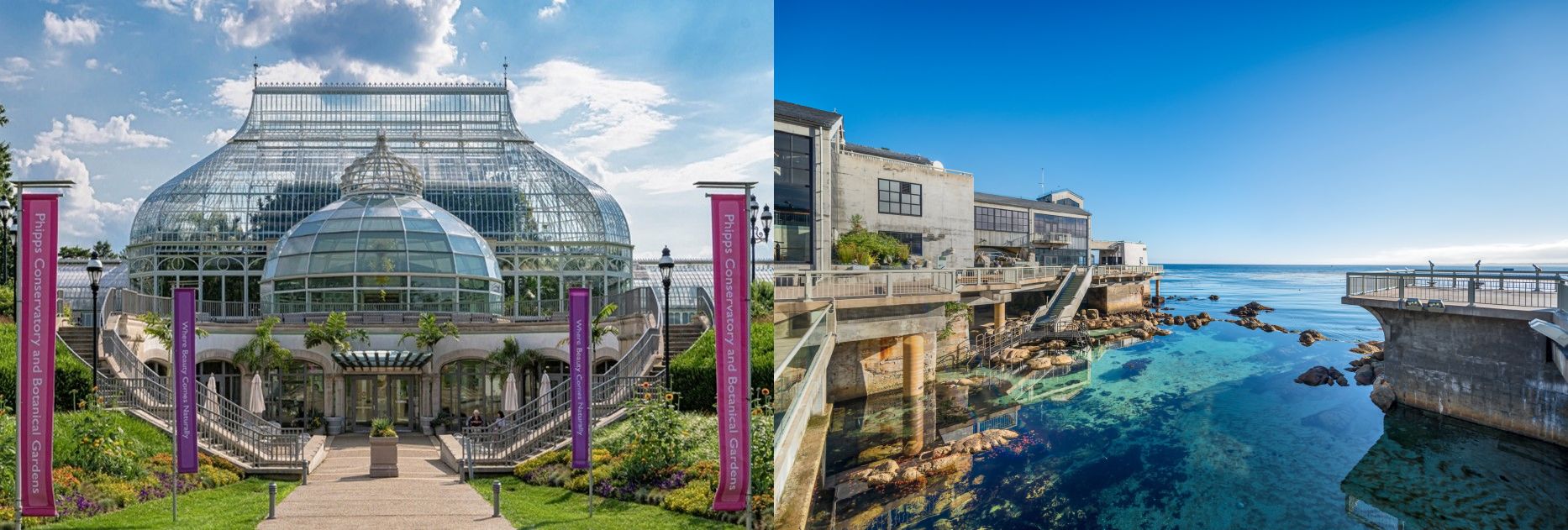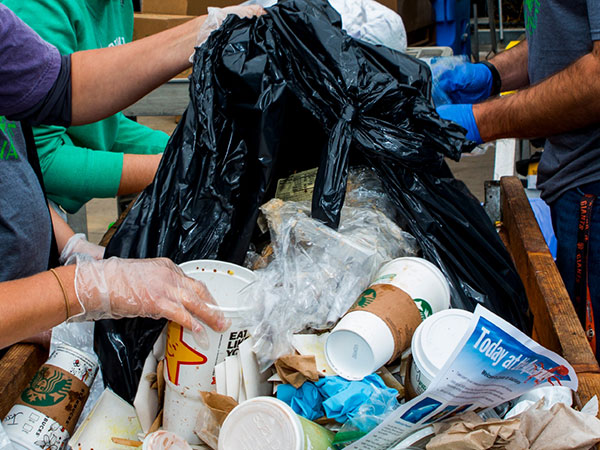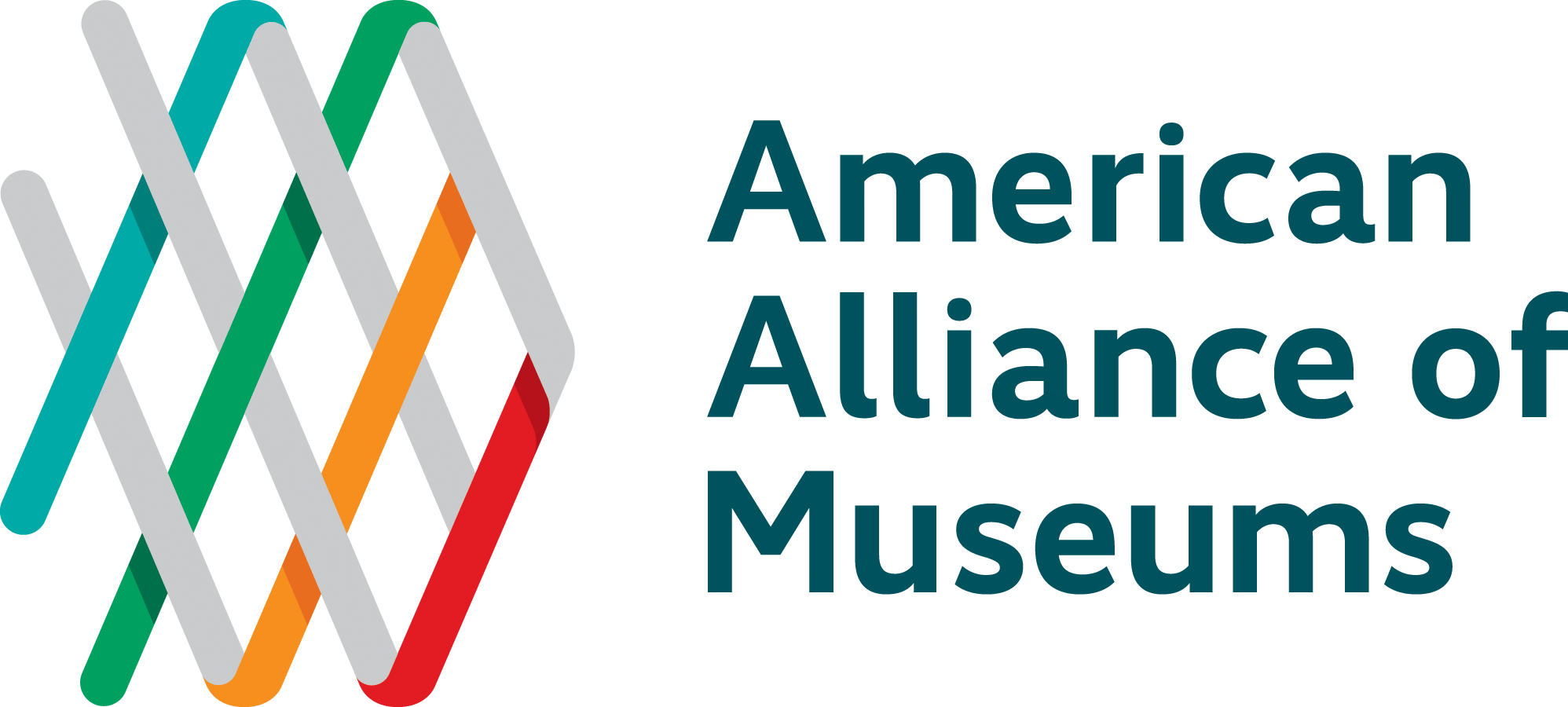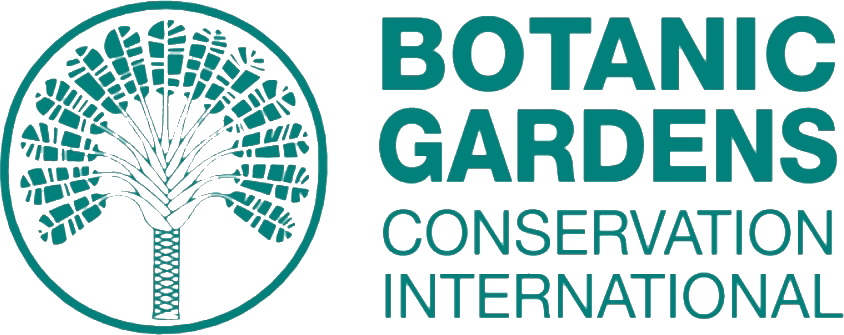Kupunguza Plastiki: Mwongozo wa Rasilimali

Kama ufuatiliaji wetu Desemba mtandao, tumeweka pamoja mwongozo ufuatao ili kueleza na kutoa maelezo zaidi kuhusu mbinu ambazo Monterey Bay Aquarium na Phipps Conservatory Botanical Garden walitumia kupunguza taka zao za plastiki zilizotumika mara moja. Makala haya yanaelezea mbinu na zana tofauti za kupunguza plastiki, ikijumuisha mbinu za juu-chini na chini-juu, ukaguzi wa taka, na ushirikishwaji wa wafanyikazi kupitia njia ya plastiki.
Plastiki imeenea katika tasnia ya rejareja na huduma, kutoka kwa mifuko na vyombo hadi kontena na vifungashio. Sio tu kwamba plastiki inachafua mfumo ikolojia, lakini pia hutoa alama ya kaboni muhimu kuunda, kuharibu na/au kusaga tena. Uzalishaji wa plastiki huchangia tani milioni 232 za uzalishaji wa CO2 kwa mwaka. Plastiki pia iko chini ya msururu duni wa uangalizi, ambapo plastiki nyingi ambayo inadhaniwa kusindika tena hutupwa kwenye jaa la taka. Cha kusikitisha ni kwamba, chini ya 9% ya plastiki yote hurejeshwa au kutumika tena. Kiwango cha wastani cha taka za plastiki ambazo hutupwa kwenye dampo kila mwaka ni tani milioni 300. Hata tunapofanya kuchakata, mchakato unahusisha kutoa kiasi kikubwa cha kaboni; kuchakata tena (au uchomaji) hutoa takriban tani milioni kumi na tano za gesi chafuzi. Haijalishi jinsi unavyotumia plastiki, uzalishaji wa kaboni unatolewa. Unaweza kupata habari hii na maelezo zaidi juu ya michango ya plastiki kwa mabadiliko ya hali ya hewa katika ripoti Makaa Mapya: Plastiki na Mabadiliko ya Tabianchi, rasilimali kutoka Beyond Plastics.
Mahali pa Kuanzia
Katika ulimwengu ambapo plastiki inapatikana kila mahali kwamba ni rahisi kupuuza katika shughuli za kila siku, kutafuta mahali pa kuanzia ili kupunguza matumizi yako inaweza kuwa vigumu. Mojawapo ya njia bora za kuanzisha mradi ni kufikiria ni mbinu yako kwa kupunguza.

A mbinu ya juu-chini ni pale wasimamizi na watendaji hufanya maamuzi ambayo yanajitokeza katika mfumo mzima; a mbinu ya chini juu ni pale ambapo wafanyakazi huunda mawazo au miradi ambayo inaweza kupanda juu. Mbinu hizi hukamilishana, zikiruhusu shirika kufanya mabadiliko ya haraka, yenye ufanisi inapowezekana na kusaidia kuhakikisha kujitolea na shauku katika wafanyikazi wote ili kupata maelezo ambayo hayako nje ya malengo ya upangaji wa hali ya juu.
Phipps Conservatory
Phipps Conservatory ilitumia mbinu za juu-chini na chini-juu ili kupunguza matumizi yao ya plastiki. Kwa mtazamo wa juu-chini, uongozi wa Phipps ulifanya kazi moja kwa moja na usimamizi wa mkahawa wake ili kuagiza mbinu kamili ya kupunguza plastiki. Kupitia ushirikiano huu, Phipps iliweza kuondoa vyombo vyote vya plastiki, vikombe, chupa za maji, vifuniko, vyombo vya fedha, na sahani zilizo na mbadala zinazoweza kutengenezwa au kutumika tena. Mojawapo ya vipengele vikubwa zaidi ilikuwa kuondolewa kwa soda na chupa za maji za plastiki na ufungaji wa vituo vya kujaza maji katika kihafidhina.

Ili kutimiza mbinu ya kutoka chini kwenda juu, Phipps ilikumbatia umbizo la tukio la hackathon ili kuunda fursa kwa wafanyakazi kujadiliana kuhusu suluhu za kupunguza plastiki. A Hakathoni ni tukio ambalo huruhusu wafanyikazi kuunda suluhisho la shida. Hackathons ilianza kama fursa kwa wataalamu wa teknolojia kushirikiana na kutatua matatizo ya kiufundi; leo, shule, biashara, jumuiya, serikali na mashirika yasiyo ya faida yanatumia hackathons kubuni ufumbuzi wa matatizo mengi, ikiwa ni pamoja na suala la plastiki ya matumizi moja.
Justin Stockdale wa Baraza la Rasilimali la Pennsylvania alihudumu kama mshauri mtaalamu wa tukio la saa sita la hackathon. Wafanyakazi thelathini na moja kutoka idara zote za Phipps walijiandikisha kwa hiari kushiriki. Wafanyikazi waligawanywa katika vikundi vinavyozingatia masomo kama mbadala wa mboji, matumizi ya plastiki na ugawaji upya, taka za plastiki katika kilimo cha bustani, matumizi ya plastiki na wageni, plastiki inayotumika kusambaza maua, na alama za plastiki na vifaa vya ufungaji. Tukio lililozalishwa mawazo ya ubunifu arobaini na mbili kuhusu jinsi ya kupunguza plastiki ndani ya idara zote. Orodha ya mawazo imeambatanishwa hapa chini. Baadhi ya mawazo haya ni madogo na mengine makubwa, lakini hackathons zinaunga mkono mawazo yote.
Hafla hiyo iliwasha nia ya kuendelea kupunguza plastiki, na wafanyikazi wanane waliamua kuunda a Timu ya Kupunguza Plastiki ili kuendelea kuimarisha juhudi hizi. Wafanyikazi wa Phipps wametekeleza kwa ufanisi mawazo tisa kati ya haya katika idara za kilimo cha bustani, uuzaji, matukio na elimu, na zaidi yajayo.


Monterey Bay
Monterey Bay Aquarium ni kiongozi wa elimu endelevu na inayohusiana na hali ya hewa; dhamira yao imejikita katika uendelevu na miradi yao huenda zaidi ya kuta za aquarium ili kuiga mbinu bora kwa wageni wao na jumuiya. Uhusiano wa Monterey na kupunguzwa kwa plastiki huanza na bahari; takriban tani milioni 9 za vipande vya plastiki vinakadiriwa kurushwa baharini kila mwaka. Claudia Pineda Tibbs, meneja uendelevu wa Monterey Bay Aquarium, anaelezea jinsi ukaguzi wa taka ulivyotumiwa kutathmini na kupunguza matumizi yao ya plastiki, matokeo ya jumla ya ukaguzi, changamoto na fursa za matumizi yao ya plastiki.

"Kiwanda cha kuchakata tena cha Kaunti ya Monterey kiliacha kupokea aina fulani za plastiki, kwa hivyo wataalamu wetu wa wanyama walilazimika kufikiria upya jinsi na nini tulikuwa tunalisha wanyama wetu. Kwa kusikitisha, kile wanyama wetu hula huanguka chini ya lishe ya mifugo, kwa hivyo ilikuwa ngumu kufanya mabadiliko yoyote. Wafanyikazi wetu waliamua kukamilisha ukaguzi wa taka mwanzoni mwa 2020 ili kutathmini upangaji wetu wa taka. Taka zilikusanywa kwa saa 24 katika eneo lote la chuo ikijumuisha maeneo kama vile mgeni, mkahawa, maeneo ya maegesho, na maeneo yaliyowekewa vikwazo vya wafanyakazi. Ukaguzi wa taka ni tathmini ya mpango wa taka wa vifaa, kwa kawaida ili kuona kama kuna miunganisho yoyote isiyo sahihi kuhusu jinsi ya kupanga takataka au kupima kile ambacho wafanyakazi wako au wageni wanaleta kwenye tovuti yako. Ukaguzi ni zana muhimu za kufuatilia ili kubaini msingi wa matumizi ya taka ya taasisi yako, jinsi unavyopanga, na kuona kama unahitaji njia nyingine ya takataka.”
| Aina ya Taka | Kizazi % | Pauni | Kiasi ambacho kinaweza kubadilishwa | Uchafuzi |
| Dampo | 40% | Pauni 677. | 80% | |
| Usafishaji | 9% | Pauni 159. | 32% | |
| Mbolea | 51% | Pauni 861. | 0.4% |
Matokeo ya jumla ya ukaguzi wa taka yameonyeshwa hapo juu. "Ina ufahamu sana, ya kuvutia, na ya kuchukiza" ndivyo Tibbs anavyoelezea mchakato huo. Kama unavyoona, juhudi za kutengeneza mboji ziliwakilisha kiwango cha juu zaidi cha uzalishaji na kiwango cha chini cha uchafuzi. "Takriban 40% ya takataka zetu inaenda kwenye jaa ambalo 80% inaweza kuelekezwa kutegemea kaunti. Elimu miongoni mwa wageni wetu na wafanyakazi wetu ni muhimu sana ili kusaidia kuhimiza upangaji sahihi. Wafanyikazi wetu wamefanya kazi kwa bidii kupanga taka za mikahawa kwenye mapipa yao sahihi na kupunguza taka zetu. Washirika wa rejareja na upishi wamesaidia sana; baadhi ya wauzaji wetu wa reja reja wameacha kufunga bidhaa zao kwa plastiki na badala yake wanatumia kadibodi ambayo ni mboji.” Monterey Bay Aquarium iliwasiliana na wasambazaji wao wa upishi ikiwa ni pamoja na Mission Creamery ambao sasa wamebadilisha njia ya kusafirisha bidhaa zao ili kupunguza matumizi ya plastiki.

Mojawapo ya masuala yenye changamoto ambayo taasisi nyingi zinazohudumia wageni hukabiliana nazo ni kupunguza upotevu unaoletwa na wageni kwenye tovuti. Taasisi zinaweza kupunguza kiwango cha plastiki zinazozalisha lakini bado zitalazimika kujaribu kuelekeza taka ambazo wageni wao huleta kwenye tovuti yao. Huko Monterey Bay, chakula cha mchana cha wanafunzi kilizingatiwa kuwa na vifuniko vingi vya plastiki. Suala jingine lililoenea ni kwamba tovuti ya kukusanya taka inadhibiti kile kinachoweza na kisichoweza kurejelewa. "Kaunti hiyo ilikuwa na mtambo wa kusaga anaerobic ambao unaweza kuvunja bidhaa zisizojazwa virutubishi kidogo kama vile taulo za karatasi, lakini haitumiki tena. Kwa sababu hatuwezi kudhibiti kile kaunti inachukua, ubadilishaji wetu wa plastiki unategemea kaunti.
Kwa zaidi juu ya ukaguzi wa taka, angalia Uendelevu wa Chuo Kikuu cha Harvard huko Harvard, "Jinsi ya Kuandaa Ukaguzi wa Taka.”
Ushirikiano wa Mgeni
Tunapopunguza na kubadilisha mifumo ya taka, kuwashirikisha wageni wetu ni muhimu. Baadhi ya njia za kuwahimiza wageni ni kupunguza matumizi yao ya plastiki ni pamoja na alama, elimu, vitu vilivyochaguliwa kuangaziwa kwenye duka lako la zawadi, na zaidi.
Phipps Conservatory na Monterey Bay Aquarium wanatumia mbinu mbili tofauti kuwatia moyo wageni wao kupunguza plastiki zao. Maonyesho ya gyre ya kielimu yaliyoundwa kwa plastiki zilizosindikwa hugundua wazo la plastiki kukwama ndani ya bahari. Hifadhi ya maji imejitolea kuwahimiza wageni wetu pia kupunguza matumizi yao ya plastiki kwa kuuza chupa za maji zinazoweza kutumika tena, mifuko na vibadala vingine vya plastiki na kutotoa plastiki ndani ya mikahawa na maduka ya reja reja. Vituo vya kujaza maji upya vinapatikana kote kwenye maonyesho yanahimiza chupa za maji zinazoweza kutumika tena. Phipps Conservatory hutumia ishara kuwaelimisha wageni wake kuhusu kile wanachoweza kutupa, ikiwa ni pamoja na maonyesho ya 3-d ya kila bidhaa ya kawaida na mahali inapopaswa kwenda. Alama ni muhimu kwa wageni wetu ambao huenda wasijue ni nini kinachoweza kutundikwa na kisicho na mbolea.
Kwa zaidi juu ya kushirikisha wengine ili kupunguza matumizi ya plastiki moja, angalia nyenzo hizi.
- Kwenye Taka za Plastiki:
- Makaa Mapya: Plastiki na Mabadiliko ya Tabianchi
- (Zaidi ya Plastiki)
- Plastiki Zaidi Ipo Njiani: Inamaanisha Nini kwa Mabadiliko ya Tabianchi
- (Shule ya Hali ya Hewa ya Columbia)
- Njia 10 za zoo yako au aquarium inaweza kupunguza matumizi ya plastiki
- (Mradi wa Bahari)
- Jinsi ya kupunguza plastiki yako ya matumizi moja kwenye zoo yako au aquarium
- (Ushirika wa Ulimwengu wa Zoo na Aquarium)
- Makaa Mapya: Plastiki na Mabadiliko ya Tabianchi
- Juu ya Ukaguzi wa Taka:
- Mbinu Bora kwa Washiriki wa WasteWise
- (Wakala wa Ulinzi wa Mazingira)
- Jinsi ya Kuandaa Ukaguzi wa Taka
- (Chuo Kikuu cha Harvard, Uendelevu)
- Mbinu Bora kwa Washiriki wa WasteWise






Habari,
Asante kwa makala hii yenye kuelimisha. Ninafanya kazi ya kujenga na kupaka rangi mandhari ya ukumbi wa michezo na ninaona plastiki nyingi zaidi zikiletwa kama vifaa vya ujenzi. Je! unajua habari zozote za kuanzia jinsi ya kupunguza matumizi ya plastiki kwenye ukumbi wa michezo na sanaa?
Asante,
Beth Zamborsky
Hii ni rasilimali ya vitendo sana ya kupunguza plastiki, nilipendekeza kwa wamiliki wa biashara ninaowajua. Ninapenda mchoro wa mbinu ya juu chini na chini - inajieleza yenyewe. Monterey Bay Aquarium hakika ni kiongozi wa elimu endelevu na inayohusiana na hali ya hewa na wao ni mfano mzuri sana wa kufuata.